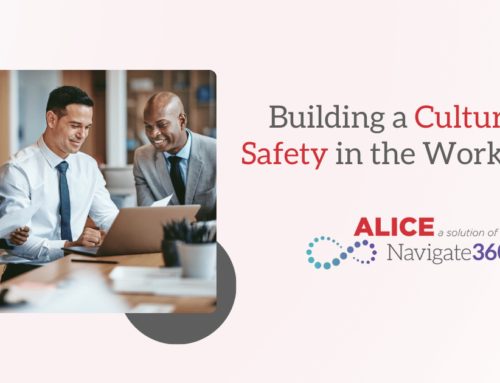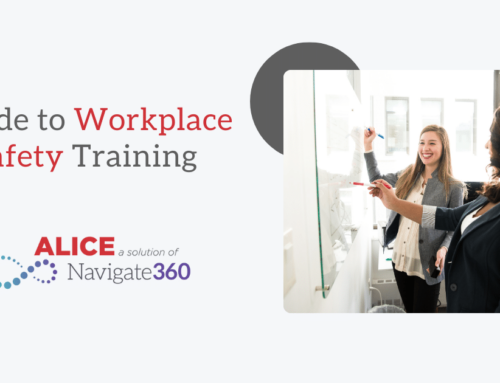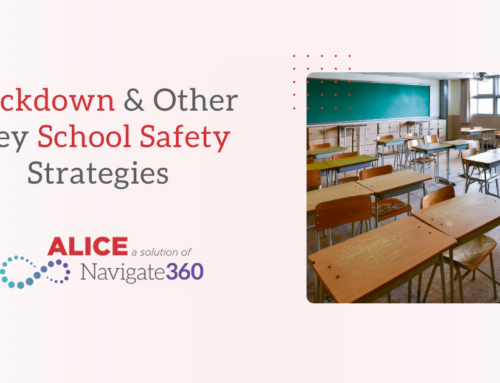
Workplace Violence Prevention Plan: Key Employee Safety Topics
Workplace violence is a growing concern across all industries. In the United States alone, there are about 2 million victims of workplace violence every year. And across the world, 68% of workers do not feel safe at work.
Workplace violence in healthcare is particularly staggering. The data show that violence against healthcare workers is 12 times higher than in any other industry in the United States. With incidents ranging from verbal abuse to physical assaults, the need for comprehensive workplace violence prevention plans has never been more critical.
Such plans protect employees and foster safer, more productive work environments. This blog will guide you through the essential components of a workplace violence prevention plan, touching on key employee safety topics, the importance of situational awareness at work, and the specific challenges faced in healthcare settings.
Understanding Workplace Violence
According to the National Institute for Occupational Safety and Health (NIOSH), workplace violence is defined as “violent acts, including physical assaults and verbal threats, directed toward persons at work or on duty.” Workplace violence can occur between employees, from a customer or client, or even from a personal relationship spilling over into the workplace.
The effects of workplace violence are far-reaching. For employees, it can lead to physical injuries, psychological trauma, and a decrease in job satisfaction. For employers, the consequences include higher turnover rates, increased absenteeism, and potential legal liabilities. Every year, workplace violence results in hundreds of billions of dollars in revenue lost for American businesses.
The Importance of a Workplace Violence Prevention Plan
A workplace violence prevention plan is not just a legal requirement in many jurisdictions, it is also a critical component of a safe and supportive work environment. These plans provide a structured approach to identifying hidden risks, implementing preventive measures, and responding effectively to incidents. An effective workplace violence prevention plan includes several key elements: risk assessment, employee training, and a robust response and recovery strategy.
Beyond the obvious ethical responsibility to protect employees, organizations also face legal obligations to ensure workplace safety. Failure to implement adequate violence prevention measures can lead to severe legal consequences, including fines and lawsuits.
Key Elements of a Workplace Violence Prevention Plan
Knowing that workplace violence is both common and costly, employers should not waste time in developing and implementing their violence prevention plans. Here are some of the key elements that make up an effective workplace violence prevention plan:
Risk Assessment: A comprehensive risk assessment is the crucial first step of any effective workplace violence prevention plan. From identifying strengths to determining hidden risks and weaknesses and providing insight into critical technology infrastructure, these assessments serve as the foundation for your organization’s successful emergency preparedness initiatives now and in the future.
In healthcare, where the risk is particularly high, this assessment should be ongoing and adaptive to changing conditions.
Employee Training: Training is one of the most critical aspects of any violence prevention plan. Employees should be trained to recognize the early signs of potential violence and the appropriate steps to take when they feel unsafe. Effective training covers employee safety topics like situational awareness at work by teaching staff to be aware of their surroundings and the behaviors of those around them. Ensuring that your employees are prepared to identify and respond to any threat enhances workplace well-being and safety.
Response and Recovery: While preparation and prevention are crucial, violence can happen anywhere and anytime. It’s important to make sure your organization is ready. A key component of employee safety is ensuring that your business has a response and recovery plan to address any emergency or incident that could occur.
Every employer should conduct in-person training sessions to educate and equip their staff to respond to violent incidents. Your staff needs to know that they have options when tragedy strikes.
Ensure Your Workplace is Ready to Act
Developing an effective workplace violence prevention plan is essential for creating a safe and supportive work environment. By addressing key employee safety topics, promoting safety training and situational awareness at work, and tailoring strategies to high-risk settings like healthcare, organizations can significantly reduce the risk of violent incidents.
At Navigate360, our mission is to empower organizations with the tools and knowledge needed to create a culture of safety. Start building your comprehensive workplace violence prevention plan today to ensure the well-being of your employees and the long-term success of your organization.
9 Must Haves for an Active Shooter Response Program
Looking to build or improve safety for your employees? Discover what your active threat prevention and response program may be missing with this free guide – 9 Must Haves for an Active Shooter Response Program. Get your copy today!






